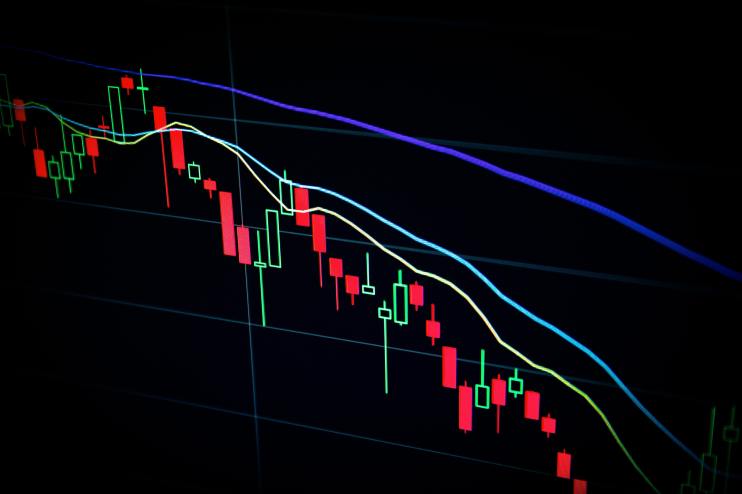Crypto exchanges’ Bitcoin balances plunge, and Ethereum closer to major upgrade

Data from CryptoCompare shows that the price of Bitcoin moved sharply upward at the beginning of last week, going from a $19,000 low to a $22,000 high before enduring a correction. BTC is now trading at $20,500.
Ethereum’s Ether, the second-largest cryptocurrency by market capitalisation, moved in a similar pattern, going from $1,100 to a $1,250 high before enduring a correction. The cryptocurrency is now trading at $1,150.
This week, headlines in the cryptocurrency space focused heavily on Bitcoin steadily moving off of cryptocurrency trading platforms, and on Ethereum moving one step closer to a major upgrade that will make it much more environmentally friendly.
According to data from Glassnode, crypto exchanges have seen their Bitcoin balances drop by more than 20% from a January peak. The crypto winter has seen investors move into a holding mode where they self-custody their funds on-chain.
On-chain activity has dropped by more than 13% in early July from November’s highs to levels last seen during the 2018 bear market. Crypto exchanges have seen their BTC balances drop more than 20% from a January 20 peak.
Investors may also be moving coins off of exchanges because of recent halts in operations at cryptocurrency lenders. Companies including CoinFLEX, Celsius, and Vauld halted withdrawals, while CoinLoan reduced withdrawal amounts, reducing investors’ confidence in centralised platforms.
In June, investors moved 223,000 Bitcoin off cryptocurrency exchanges and into the wallets they control.
Bitcoin moving off exchanges is seen as a bullish signal, as rising demand with a lower supply could lead to higher prices. Meanwhile, Ethereum has moved one step closer to The Merge, where the network will transition from a proof-of-work consensus mechanism into a proof-of-stake (PoS) consensus mechanism after its Sepolia testnet successfully activated PoS.
Sepolia is the second of three testnets to merge their Proof-of-Work execution layers with their PoS consensus layer before the upgrade is made on Ethereum’s mainnet. The Ropsten testnet successfully merged on June 8, and the next and final testnet dong so is Goerli.
Developers are set to keep monitoring the Sepolia testnet to ensure it’s functioning normally after the merge and iron out potential bugs. The Goerli testnet merge is expected to occur within the next three to four weeks, setting the stage for a potential mainnet merge in September.
These developments come at a time in which investors are still moving away from the cryptocurrency space, with CryptoCompare’s Digital Asset Management Review revealing everal cryptocurrency exchange-traded products (ETPs) posted record losses last month, with the worst-performing product being 21Shares’ Aave ETP, which dropped 52.6%. ETPs focused on leading cryptocurrencies like BTC and ETH lost between 27% and 45% of their value.
Indian crypto exchange volumes plunge, and Argentines turn to stablecoins
Throughout the cryptocurrency world, adoption has been moving rapidly. Four major Indian cryptocurrency exchanges – ZebPay, WazirX, Giottus, and CoinDCX – have seen their daily trading volumes plunge between 60% and 87% after a 1% tax-deductible at source became effective on July 1.
The steep declines came from already lowered trading levels affected by a combination of plunging cryptoasset prices, unfavorable tax treatments, and difficulty getting cash onto trading platforms.
Binance-backed exchange WazirX, for example, traded $3.8 million on July 2, the day after the tax took effect. In early July of last year, it reportedly took the exchange less than two hours to reach that volume.
WazirX Vice President Rajagopal Menon noted that while long-term crypto holders are still buying and selling, market makers and high-frequency traders are “gone.”
In Argentina, investors have turned to stablecoins following the resignation of the economy minister, Martin Guzmán, amid an ongoing economic crisis. They reportedly purchased between two and three times as many stablecoins as they would on a typical weekend.
Three major cryptocurrency exchanges have said that consumers were looking to hedge against a potential devaluation of the country’s fiat currency, the Argentine peso, which has seen its buying power plummet over the past year amid skyrocketing inflation.
Guzmán’s resignation saw the peso depreciate around 15% against the stablecoins DAI and USDT on several leading cryptocurrency trading platforms. Argentine exchange Buenbit recorded a 300% rise in trading volume on Sunday, compared to the same day in previous weeks.
Crypto lenders set withdrawal limits
Embattled cryptocurrency lenders kept on making headlines throughout the week, with Singapore-based crypto trading and lending platform Vauld becoming the latest firm in the space to halt customer withdrawals.
After Vauld’s move, lender CoinLoan temporarily reduced the withdrawal limit for lenders amid the ongoing market turmoil. The European lender’s move sees it join a number of other crypto businesses freezing or limiting withdrawals, including Celsius and Voyager.
Celsius, which halted withdrawals last month, has managed to repay a $183 million loan to a decentralized finance protocol, which allowed it to recover 2,000 WBTC worth around $40 million that had been posted as collateral.
Francisco Memoria is a content creator at CryptoCompare who’s in love with technology and focuses on helping people see the value digital currencies have. His work has been published in numerous reputable industry publications. Francisco holds various cryptocurrencies.